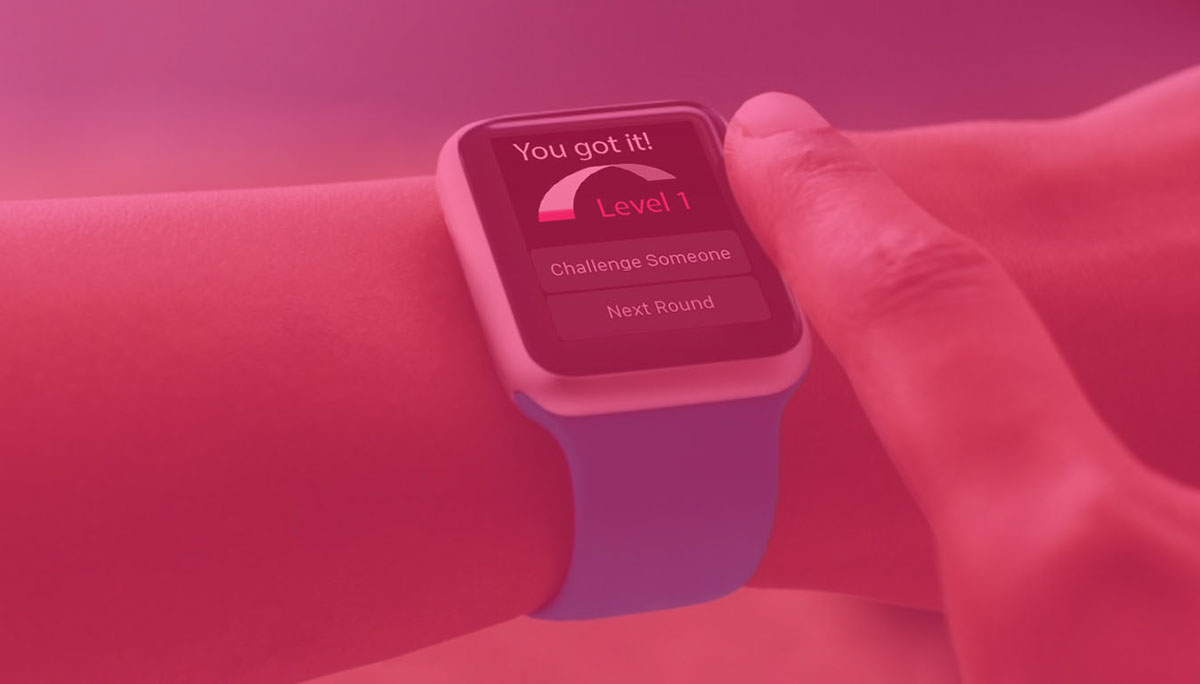
Research and Testing
In order to better understand our users, we conducted several prongs of research. We began by creating and sending out two separate surveys to various online communities. One was targetted towards people who played games on smartphones, and was designed to determine playing habits and demographic information. One was targetted towards Apple Watch users, and was designed to determine usage patterns, preferred existing apps, and demographic information. We received hundreds of responses to these surveys, which we catalogued in an Affinity Map.
We then began to observe and interview Apple Watch users in particular, in order to test the insights we'd gotten from the survey and hopefully find more design opportunities as well. We interviewed recreational users as well as other developers designing for the Apple Watch in order to get a good spread of results. We also did a competitive analysis of games currently available on the Apple Watch. We had some of our interviewees try out a handful of these games and talk through the experience, starting from the download all the way to playing the game itself.
From this research we were able to come up with seven specific design principles which we knew our game would have to follow in order to best match its platform.
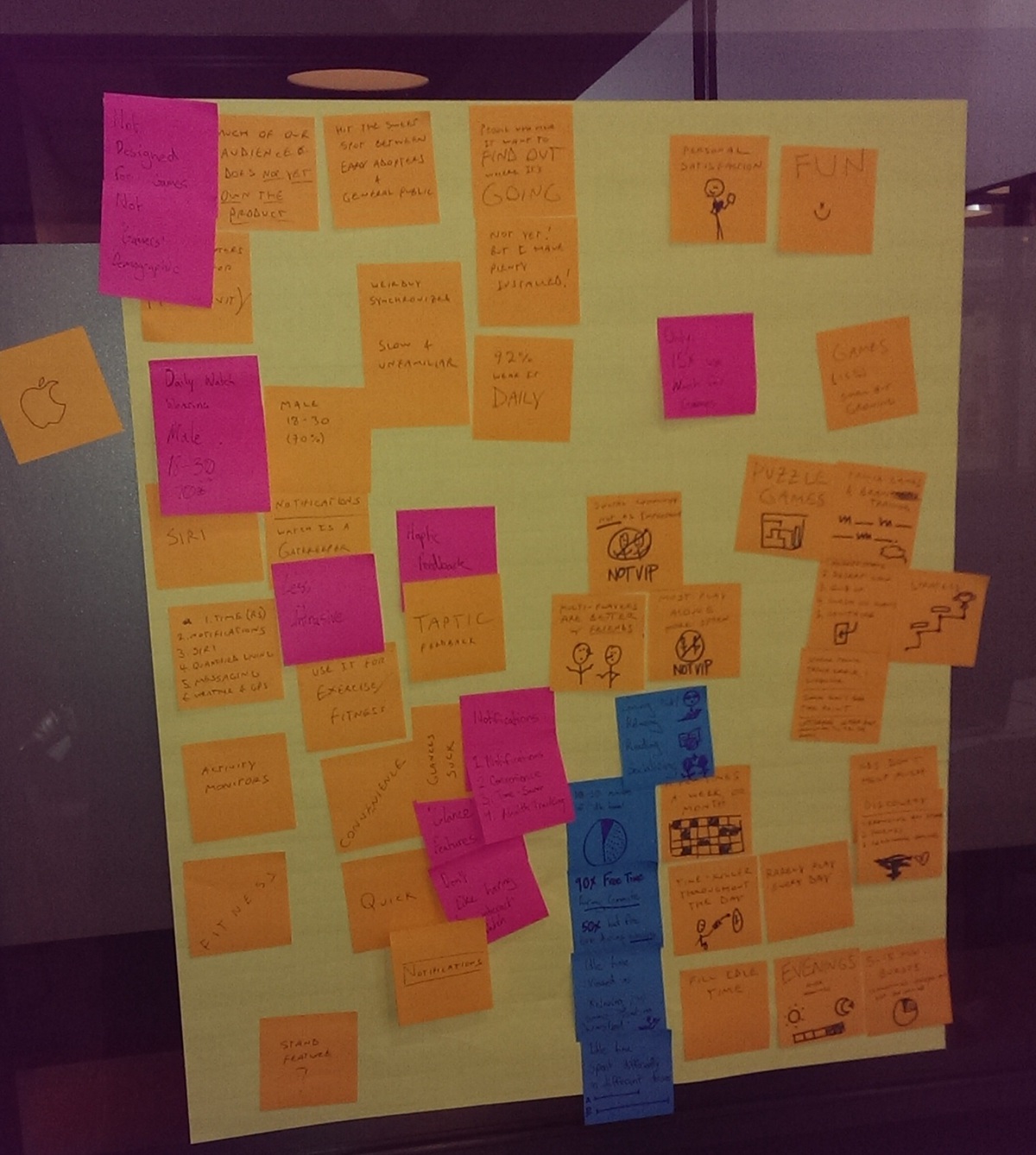
Survey results were organized into an Affinity Map. We grouped post-its into categories based on their input, then considered how each category might be distilled into an insight or design principle.
Design Principles
1. Limit gameplay to burst micro-interactions of 10-30 seconds
The Apple Watch is not easy to use for long stretches. If the periods of gameplay are any longer than 30 seconds at the most, the game is better suited for mobile. However, if it's limited to small bursts at a time, a game can fit right in with typical Watch use cases.
2. Take advantage of the Apple Watch's unique features
The ideal Watch game makes elegant use of the platform's key features, thus plugging into the excitement around the device and taking on the shape of its container.
3. Minimal UI
Apple Watch screens are small. Complex interactions don't work. Single finger swiping and tapping tend to be the most comfortable methods of interacting with the Watch, and even then precision tapping can be frustrating for the user. As such, gameplay interaction should be limited to broad taps and basic swipes.
4. Make the game feel productive
The 'early adopter' profile that currently makes up the vast majority of Apple Watch users show a clear preference for fast paced and productive activities. As such they would be uninterested in a game that was perceived as a 'time waster', even if the gameplay itself is entertaining. The game must appeal to their productive drive and sense of competition.
5. Conserve time and power
An overwhelming majority of Apple Watch users are conscious of the device's relatively short battery life. Most constantly monitor the battery life and consciously stay away from applications that they perceive as 'battery inefficient'. As such, the game should avoid complicated graphical interfaces that will drain the battery and make users feel like they are wasting precious energy.
6. Asynchronous Multiplayer
Like most people, Apple Watch users do have “free time” - it's just parceled out into small, unpredictable increments. Asynchronous matches, along with the ability to take on friends or strangers, gives them the power to play whenever they want. This allows us to keep a competitive bent as one of the main appeals without requiring users to schedule matches against one another.
7. Bring the game to the user
The Apple Watch users we surveyed spoke highly of notifications, but weren’t interested in spending much time tracking down new apps or browsing the Watch interface. Because of the way SPAN challenges work, players get a buzz, get in, and get out quickly.
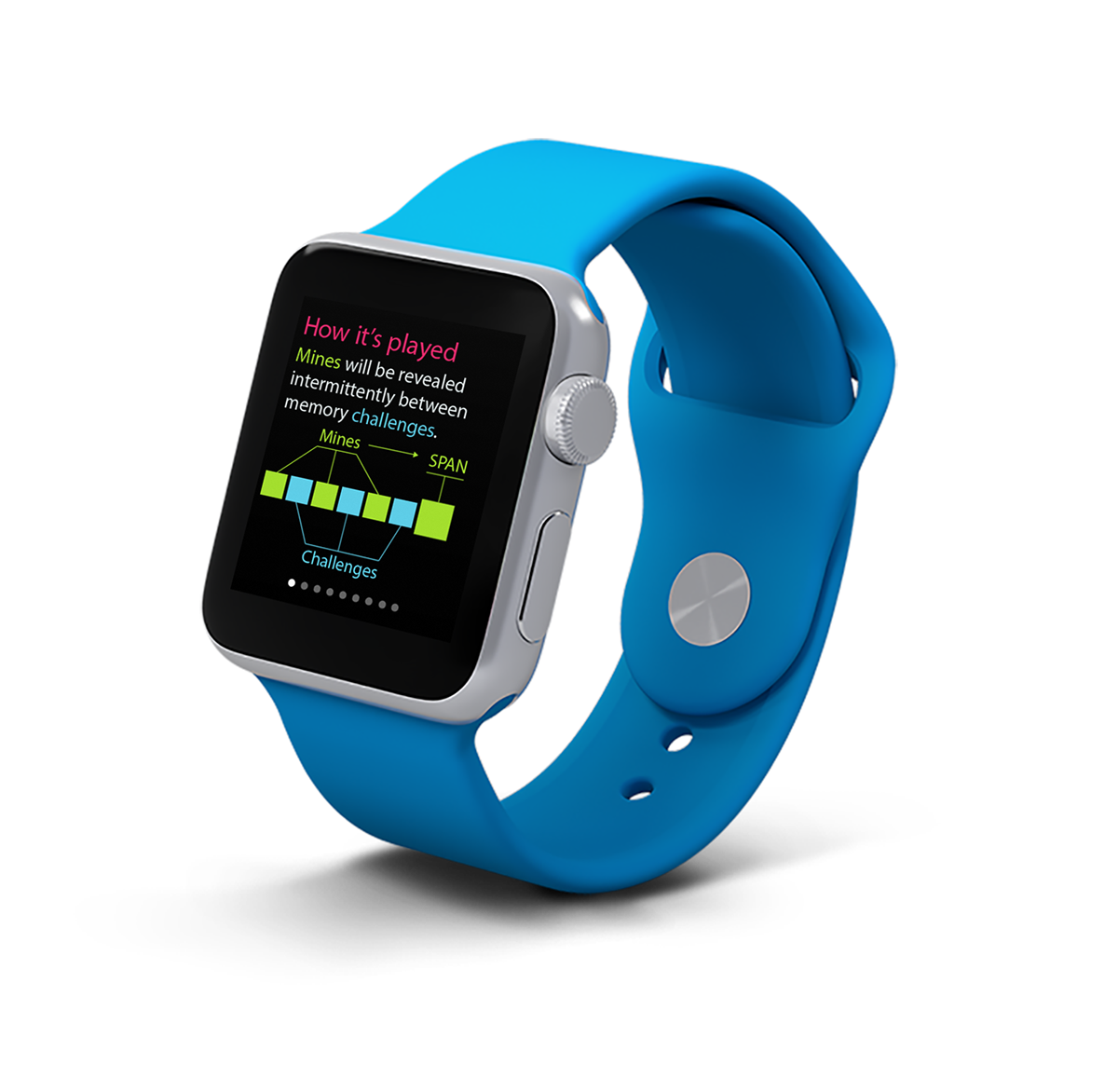
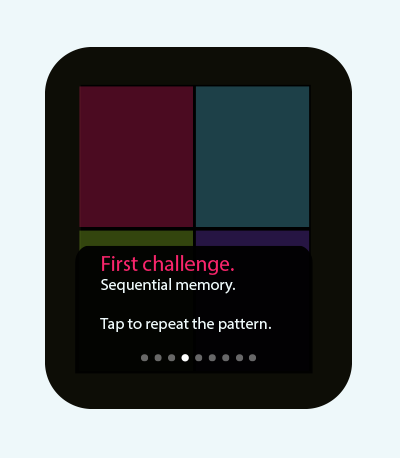
The first challenge is a sequential memory challenge, wherein the user is shown a pattern and then must replicate it in the correct order via tapping. Directional swiping was considered, but quadrant based tapping proved more intuitive for users during testing.

The second challenge is a cognitivie load task, taken from psychological tasks and repurposed as a game. The user has four seconds to select which of the two equations displayed has the larger resulting number.
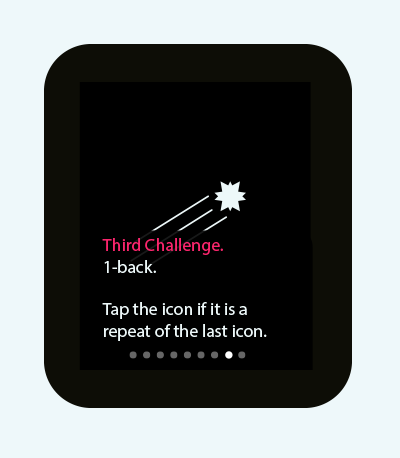
The final variant of memory task was the '1-back' task. Symbols are flashed in rapid succession across the Watch face, and the user is tasked with tapping when they recognize that a symbol has repeated twice in a row.
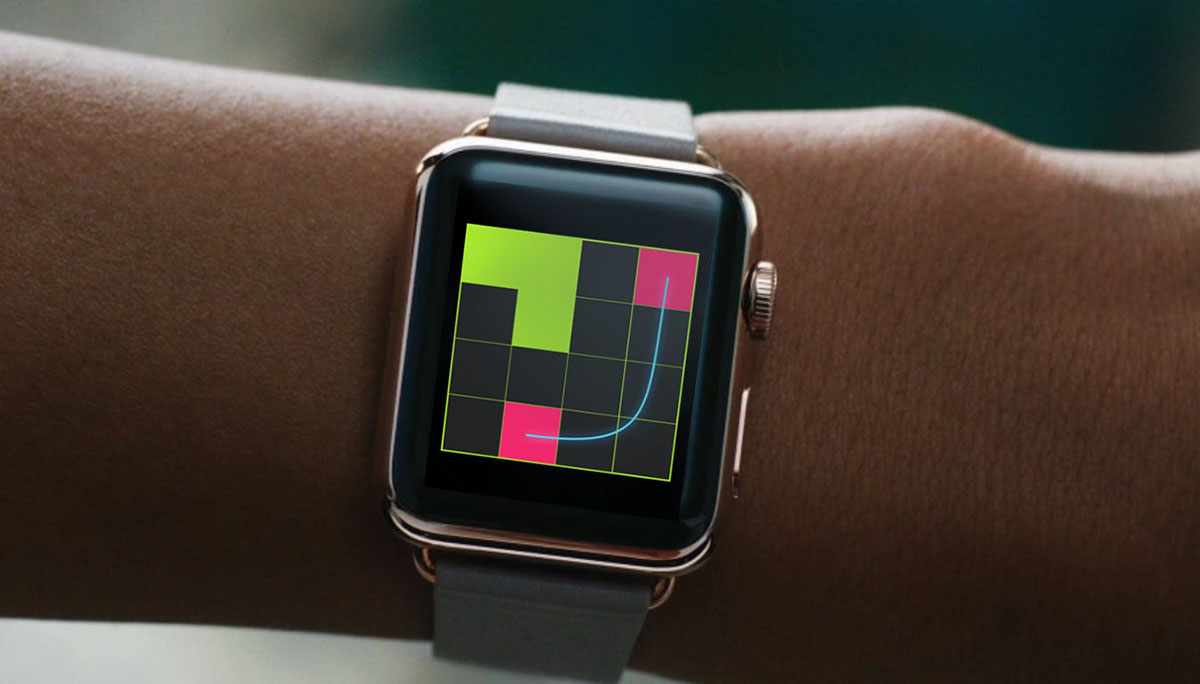
The final challenge, wherein the users must remember mine locations given out after each of the previous challenges. This test is a quicker, more interactive way of allowing the user to recite previously memorized information. Additionally if the user forgets a mine location or fails a previous challenge and is thus not given a mine, an element of suspense is introduced wherein they try to guess the location.
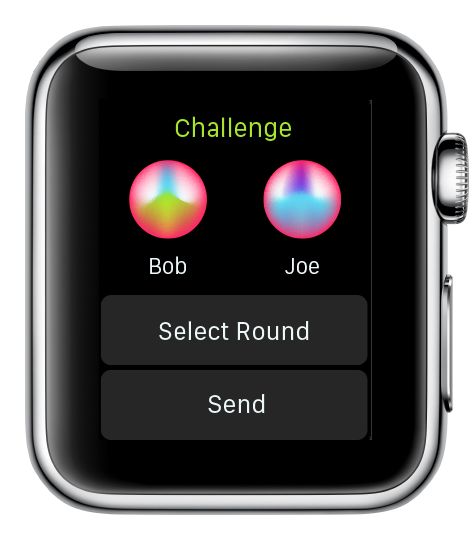
The Challenge system is an organic way of bringing our game to the users. Challenge notifications promote a competition based gameplay loop, and the notification presents the user with a way of jumping immediately into the game without having to search out the app on the Watch's cramped UI.
In-Depth Gameplay
Each round consists of one or more complex span tasks.
The player is given a challenge. Before each new challenge, they are shown a single green square from a 4x4 grid. This is a ‘mine’ square, and they will need to remember its location. This repeats anywhere from 3 to 5 times, with the length/difficulty of these cognitive load tasks increasing each round.
After this they are shown a 4x4 grid with a start and end point marked in pink. They are tasked with drawing a line between those two squares without touching any of the ‘mine’ squares. If they can do this, they have completed the round. (In later rounds, as difficulty intensifies, they may have to remember mine locations for multiple, separate grids, which they will complete one after another at the end of the task.)
Players start at Round One, which is a short tutorial level designed to introduce each “minigame,” or type of challenge Each minigame is explained, as is the overarching round system. Each completed round elevates the player’s rank and moves him on to the next round.
After successfully completing a new round, the player has the power to challenge another player to take on that round. If the second player accepts and beats the round, he can challenge the first player to the next round. This process repeats until one player fails. Players are ranked according to the highest round they have ever successfully completed.
Players can challenge other players of any rank, but can only begin challenges at the rank of the lowest-ranked player involved in the challenge.
A leaderboard will display the player’s rank compared to those of friends, others in the player’s region, and the overall playerbase. You can select individual players on the leaderboard to see your record against them in challenges. To preserve space on the Watch screen, the full leaderboard can only be seen on a connected mobile device.


